
- Home
- Workshops / Tours
- Diary / Blog
- Galleries
- Foreign Trips
- Tasmania 2016
- NE Queensland 2016
- Western Alps 2016
- NE Spain 2016
- Australia's Wet Tropics 2015
- Australia's Top End 2015
- SW Australia 2015
- Switzerland 2015
- Andalucia 2015
- Belize 2015
- Australia 2014
- Switzerland 2014
- Belize 2014
- Bahama Islands 2014
- Switzerland 2013
- Ecuador 2012-2013
- Florida 2011-2012
- Vancouver Island 2011
- Australia 2010
- Peru 2008
- Bulgaria 2007
- Lesvos 2006
- California 2006
- New Zealand 2005
- Extremadura 2005
- Goa, India 2004
- The Gambia 2003
Valais, Switzerland
June 2013
Flowers of Switzerland
Since there are too many photos to put them all on one page I've split the botanical section of this trip report into 3 parts. The first two are rather arbitrary in their separation since several of the flowers illustrated are grow over quite a wide range of altitudes both above and below the tree-line, but for the purposes of this report I've split them according to the altitudinal zone they were growing when I photographed them, except for the orchids which have part 3 all to themselves.
Flowers photographed above the tree-line
All of the below flowers featured on this page were photographed on alpine meadows and rocky slopes above the tree-line at altitudes ranging from 1800m to 3200m.
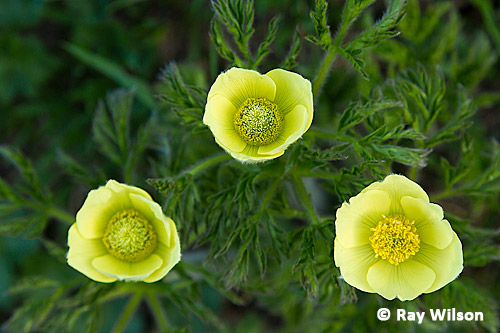
Alpine Pasque Flower (Pulsatilla alpina apiifolia)
Both Spring and Alpine Pasque Flowers produce blooms as the winter snows start to melt and are often found at the edge of the snowline and even sometimes poking through the snow.
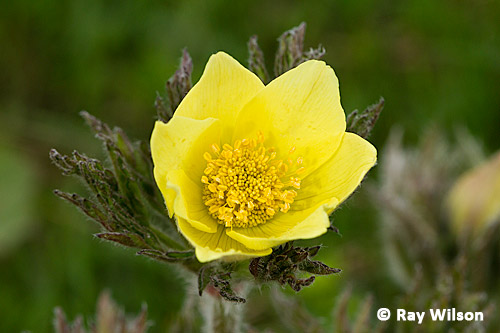
Alpine Pasque Flower (Pulsatilla alpina apiifolia)
As the spring progresses, they quickly turn to seed at lower altitudes but flowering plants can still be found in June and July on the higher slopes as the receding snowline continues to release more meadows from winter's grasp.
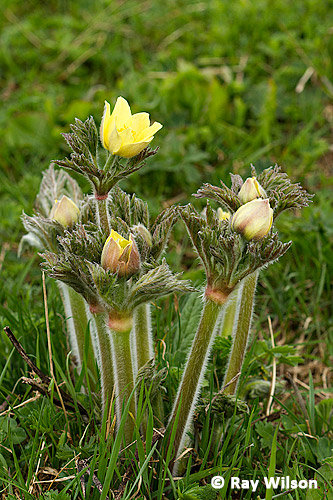
Alpine Pasque Flower (Pulsatilla alpina apiifolia) |
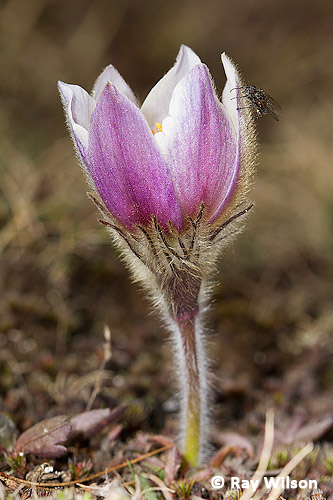
Spring Pasque Flower (Pulsatilla vernalis) |
Other flowers found on the edge of the receding snowline include Alpine Snowbells and White Crocuses...
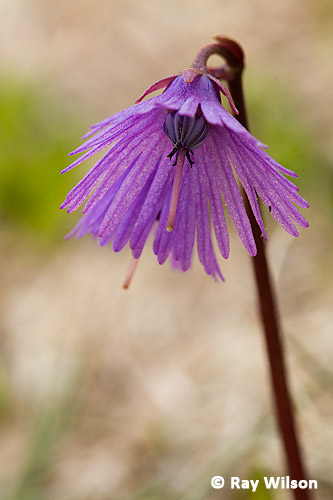
Alpine Snowbell (Soldanella alpina) |
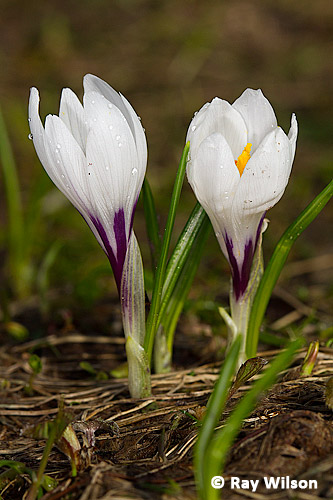
White Crocus (Crocus albiflorus) |
White Crocus is often present in both white and purple colour forms and can be found in wet meadows, often alongside Alpine Snowbells at the edge of melting snow.
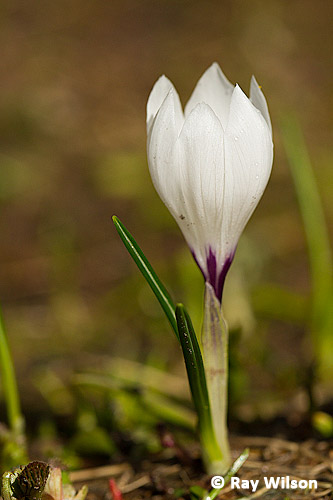 |
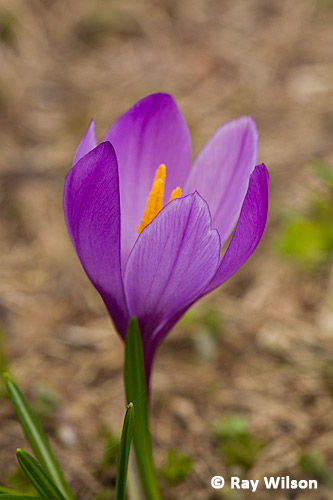 |
white and purple forms of White Crocus (Crocus albiflorus)
The large, vibrant blue, bell-like flowers of Trumpet Gentian are one of the most spectacular flowers on the high meadows and carpets of these beautiful, low-growing flowers can be found in many areas.
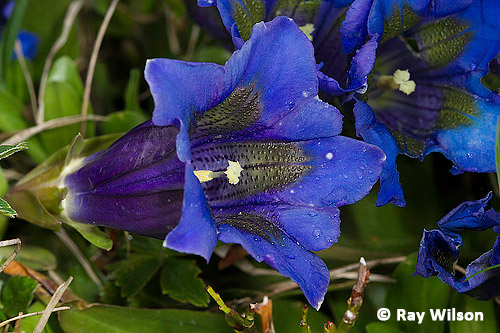
Trumpet Gentian (Gentiana acaulis)
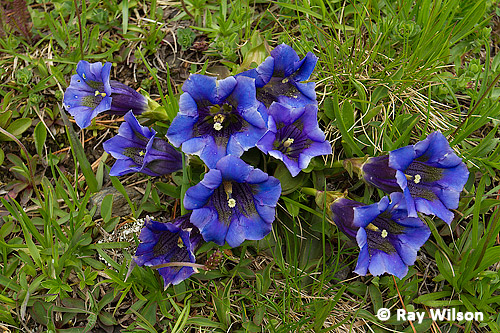
Trumpet Gentian (Gentiana acaulis)
Their much smaller relative, the Small-leaved Gentian provides another source of vibrant blue colour to the meadows.
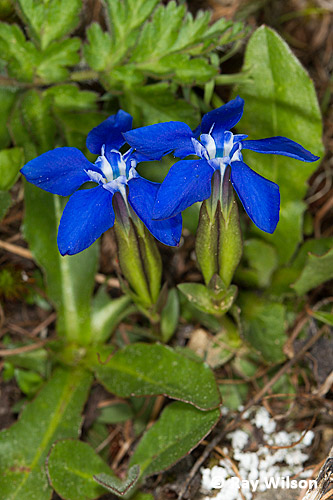 |
 |
Small-leaved Gentian (Gentiana brachyphylla)
Care needs to be taken with the identification of the gentians as there are several very similar species, and it is good practice to make sure you take a few extra photos which show the details of the basal leaves and the bracts so that the identification of each subject can be confirmed by the use of dichotomous keys.
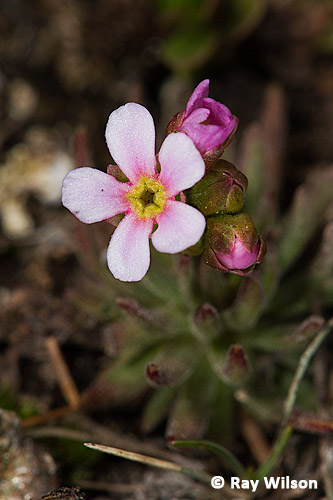
Androsace (adfinis) puberula |
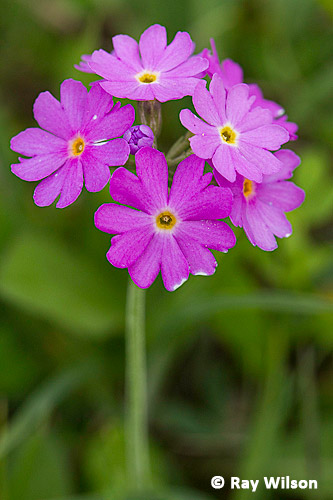
Bird's-eye Primrose (Primula farinosa) |
Androsace adfinis puberula, an alpine member of the primrose family, is sometimes given the full species status of Androsace adfinis, such as in the 2012 edition of Flora Helvetica. It grows on acidic soils in the alpine and sub-alpine vegetation belts.
The most common primula on the high meadows (up to 3000m), however, is the Bird's-eye Primrose, where it prefers damp, marshy places and can often be found growing alongside Pyrenean Buttercups.
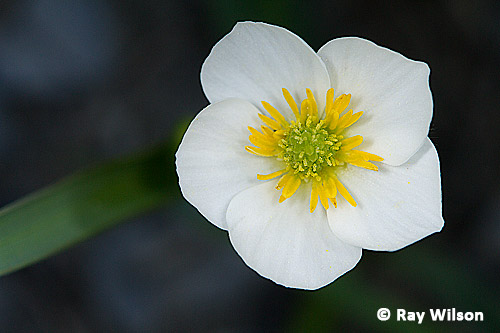
Pyrenean Buttercup (Ranunculus pyrenaeus)
In drier meadows, Alpine Avens is a commonly occurring member of the Rose family.
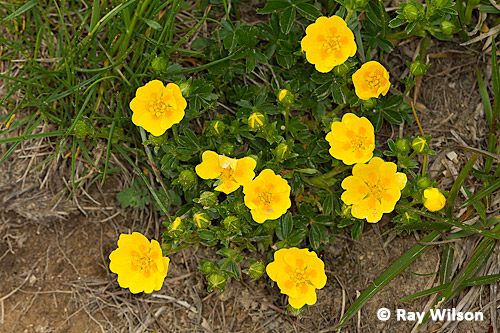
Alpine Avens (Geum montanum)
In rockier places, you may occassionally come across a patch of Hairy Primroses.
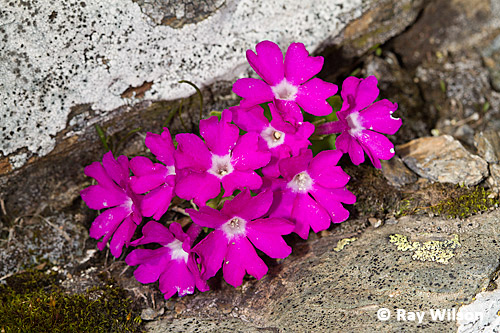
Hairy Primrose (Primula hirsuta)
Large mats of Purple Saxifrage can sometimes provide the only only splash of colour on the high peaks and it grows on scree slopes and rock crevises up to an altitude of 3800m. Thankfully, I didn't have to climb quite so high to get the photo below as it was taken at "only" 3200m above sea-level.
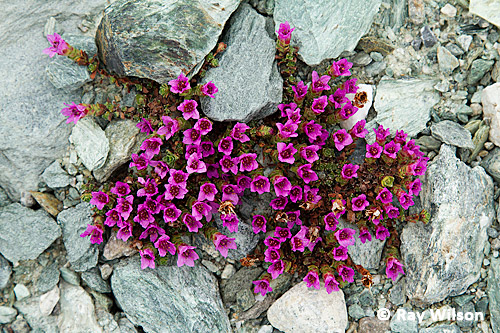
Purple Saxifrage (Saxifraga oppositifolia)
Ray Wilson owns the copyright of all images on this site.
They may not be used or copied in any form without prior written permission.
raywilsonphotography@googlemail.com